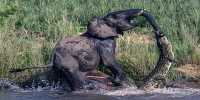The finding of the most complete titanosaur skeleton ever recovered in Europe would be impressive enough in a world where paleontologists are used to making do with a handful of bones. The mismatch between its enormous size and its location in the Pyrenees is what makes the newly identified species Abditosaurus kuehnei so intriguing. Living on an island alters species, causing some to grow larger, some to shrink, and some to lose their ability to fly. The titanosaur family of sauropods took the second path, becoming smaller than their continental counterparts, in the last few million years before the asteroid collision, when Europe was a collection of isolated islands.
Prior to the description of Abditosaurus’ 14 tonne (15.4 ton) bulk in Nature Ecology and Evolution, this was thought to be the case. “Due to their evolution under insular settings, titanosaurs from the Upper Cretaceous of Europe tend to be small or medium-sized,” stated Dr Bernat Vila of the Institut Català de Paleontologia Miquel Crusafont in a statement. “It’s a recurring phenomenon in the evolution of life on Earth; there are several examples of this evolutionary tendency in the fossil record all across the world.”
By today’s standards, the European archipelago encompassed numerous vast islands, including Ibero-Armorican, which includes modern-day Spain, Portugal, and a substantial portion of France. However, to a titanosaur, this was still small enough to limit food resources, putting evolutionary pressure on herbivorous dinosaurs to shrink. As a result, the discovery of the 17.5-meter-long (58-foot-long) Abditosaurus was unexpected. There is little dispute about its size, with 53 fragments of its skeleton recovered over decades, including scattered leg and pelvic bones, 19 vertebrae, six ribs, and a few teeth.
“We were quite fortunate; due to the Pyrenees’ tumultuous geologic past, it is unusual to locate such intact specimens,” stated co-author Dr. ngel Galobart. The authors come to the conclusion that Abditosaurus was a newcomer to Ibero-Armorican, having arrived from Africa 70.6 million years ago when sea levels were low. The African Paralitian was its closest relative, followed by modern South American titanosaurs. It was most likely not alone in making the trek. “We discovered eggshells of dinosaur species known to have lived on Gondwana, the world’s southernmost continent,” said co-author Dr. Albert Sellés.
Things did not go well for the indigenous, as they often do when island species are suddenly forced to compete with strangers from another continent. The “Maastrichtian Dinosaur Turnover” refers to an abrupt change in the population of Ibero-Armorican. The fact that it took 68 years between the discoveries of the first Abditosaurus bone to the publication of its scientific description demonstrates how slowly things move in paleontology, even when discussing extraordinarily significant finds.
Long periods of neglect of the site, as well as big storms that caused excavation to halt, slowed the progress. The genus name, which means “forgotten reptile,” honors the work’s interrupted character for posterity. Walter Kühne, who discovered the first bones, was given the species name.















